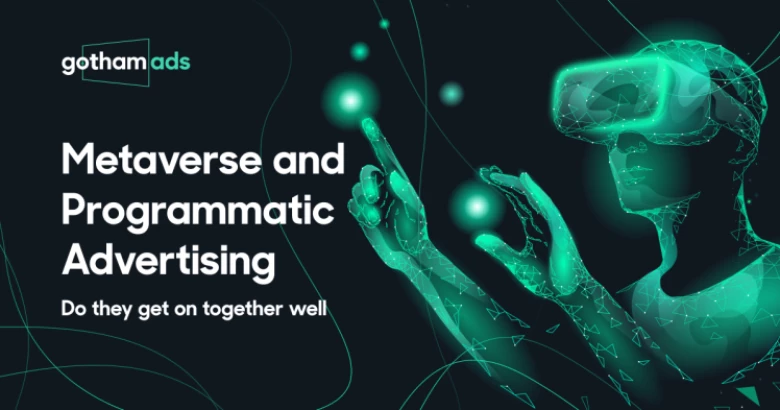Metaverse and Programmatic Advertising: Do They Get on Together Well

The metaverse concept emerged just last year following the rebranding of Facebook's parent company to Meta but marketers are already looking for new ways to connect with consumers using this knowledge. Brands already offer unique experiences to their customers. For instance, Nike has provided personalized avatars and shoes within the game Roblox, The Coca-Cola Company introduced its first virtual drink in Fortnite, and McDonald's is preparing to launch a virtual restaurant that will enable food delivery to customers' physical locations.
Advertisers find some opportunities associated with using the metaverse in programmatic advertising. But do these technologies get on together well? Let's analyze it!
What does the term metaverse mean?
The metaverse is a term used to describe a virtual shared space where users can engage with a computer-generated environment and with each other, often through virtual reality (VR) or augmented reality (AR) technology. It is a collaborative virtual space that allows users to interact with each other and digital objects in a three-dimensional immersive environment. The metaverse has been compared to a fully-realized version of the internet . Users can engage in gaming, socializing, learning, working, and buying and selling goods and services. While the metaverse concept has existed for some time, recent technological advancements have brought it closer to becoming a reality. Companies such as Facebook (now Meta), Roblox, and Epic Games have invested significantly in building their versions of the metaverse. It will become an increasingly crucial digital landscape in the coming years.
According to a Gartner report, 27% of consumers are "very familiar" or "somewhat familiar" with the metaverse. Nearly three-quarters of consumers have murkier ideas on the subject. 38% have heard of the metaverse but need clarification on its meaning. A full 35% percent have never heard of it.
How can we combine programmatic advertising and the metaverse?
Some brands already use programmatic technology to display in-game advertising, such as dynamically placing ads on digital billboards in sports games that match a consumer's interests. Ads will operate similarly, with tailored ad content displayed to users as they interact with the virtual environment, whether through VR or augmented reality glasses. For instance, Gucci entered Roblox and created a gamified experience — the Gucci Garden.
On the one hand, the metaverse presents new opportunities for programmatic advertising to reach audiences in immersive and engaging ways:
- Product placement. It allows brands to position their products within the virtual environment, such as in a branded storefront or as a featured item within a game.
- In-game advertising. This type of advertising can serve targeted ads within the metaverse, such as virtual billboards or banners within games.
- Sponsored experiences. It offers an option where brands can support virtual events such as concerts, festivals, or game events and use programmatic advertising to reach specific audiences and promote the event.
- Branded content, such as videos or games designed specifically for the metaverse, can be created and promoted through programmatic advertising.
It's important to note that the metaverse is still a relatively new and rapidly evolving technology, and the possibilities for programmatic advertising within it are still being explored. However, with the potential for immersive, engaging experiences and targeted, data-driven ad placement, the metaverse represents an exciting new frontier for programmatic advertising.
On the other hand, programmatic and metaverse combinations may face some challenges:
- Standardized technology. Despite the hype around the metaverse, there's not yet a single "standardized" metaverse. This makes implementing programmatic technology as every solution must be customized. As people start to gravitate toward specific platforms or digital spaces, standardization will follow and become easier to implement broadly.
- Brand safety. As a business, you still want to ensure your ads appear next to the content types you want your products associated with. The metaverse will need controls to ensure that you have oversight of where your message lives.
- Data privacy and security. Just as people are rightfully concerned about digital privacy today, these concerns only increase in a space like the metaverse. Consumers will want control over what they share and who they share it with to be comfortable with these ads. The deprecation of the third-party cookie has also led to a proliferation of possible solutions to market to consumers based on their identity. This problem must be solved before programmatic goes mass market in the metaverse.
What should we do now to prepare for the metaverse?
By developing a robust programmatic advertising strategy that addresses current concerns, businesses can position themselves for success in the metaverse when it becomes widely adopted. Our GothamAds team expects that the metaverse will be another channel and medium for brands to connect with their customers, like native, display, or video advertising. By proactively exploring the potential of the metaverse, businesses will stay ahead of the competition and ensure long-term success.


